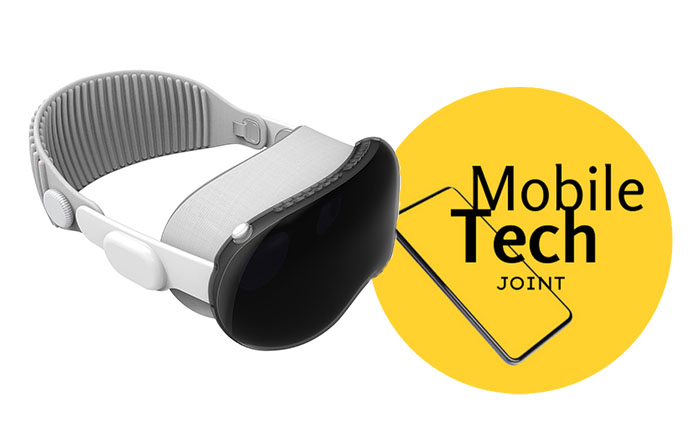Apple Vision Pro is being hailed as a significant advancement in spatial computing, promising to revolutionize how we interact with digital content. As a mixed-reality headset, it boasts impressive technology, including eye-tracking, gesture controls, and high-quality micro-OLED displays. Despite its potential, the Vision Pro faces several challenges, such as its hefty price tag, weight, and practical usability issues. This comprehensive review delves into the Vision Pro’s capabilities, strengths, and weaknesses, providing an in-depth analysis based on extensive hands-on experience.

Key Takeaways
- Rating: 5/10
- Strengths: Impressive eye-tracking and gesture controls, high-quality micro-OLED displays, multiple virtual screens for enhanced productivity.
- Weaknesses: Heavy, expensive, isolating, and buggy. Practical usability issues and discomfort during extended use.
- Primary Use Case: Primarily geared towards developers and early adopters rather than the general public.
Unboxing and Setup
The unboxing experience of the Apple Vision Pro is what you’d expect from Apple: sleek, minimalist, and premium. The setup process is straightforward, guiding you through initial configurations like adjusting the fit and setting up eye-tracking. However, first impressions reveal a device that, while technologically impressive, comes with noticeable bulk and complexity.
Design and Build Quality
The Vision Pro features a sleek, futuristic design with a reflective front panel and a comfortable strap system. However, its weight is a significant drawback. Prolonged use can cause discomfort, particularly around the temples and neck. The external battery pack, necessary due to the headset’s limited internal battery life, adds another layer of inconvenience.
Design and Comfort Issues:
- Weight: The headset feels heavy after prolonged use.
- Comfort: Issues with fit and pressure points around the temples.
- Battery Pack: The external battery pack is cumbersome and limits mobility.
Display and Optics
The Vision Pro’s micro-OLED displays are a standout feature, providing crisp, immersive visuals. Watching movies, such as a 70-mm screening of “2001: A Space Odyssey,” showcases the display’s capabilities. However, it doesn’t replicate the full cinematic experience due to the lack of a theater’s physical and social environment.
Display Quality Comparison
| Feature | Vision Pro | Traditional Theater |
| Resolution | High micro-OLED | Standard projection |
| Immersion | High, but isolating | High, with social interaction |
| Sound Quality | Limited by headset | Surround sound system |
User Interface and Controls
The Vision Pro’s user interface leverages advanced eye-tracking and gesture controls, making interactions intuitive and hands-free. However, precision issues arise, with the eye-tracking occasionally misinterpreting user intent. The Mac Virtual Display feature, while innovative, feels disjointed due to its lack of full integration.
Key Interface Features:
- Eye-Tracking: Enables hands-free navigation but lacks precision.
- Gesture Controls: Intuitive but can misinterpret gestures during typing.
- Mac Virtual Display: Innovative but not fully integrated.
Software and Performance
The Vision Pro excels in software integration, allowing users to run multiple apps like Safari, Slack, and Telegram in a virtual space. However, performance issues such as freezing, jittering, and overheating detract from the experience. Notably, the Travel Mode, essential for use in motion (e.g., on a plane), requires manual activation, leading to frustration.
Performance Challenges:
- Freezing and Jittering: Notable during prolonged use.
- Overheating: Causes interface stuttering and lock-ups.
- Travel Mode Activation: Manual and cumbersome to engage.
Productivity and Work Use Case
For productivity, the Vision Pro offers the promise of a portable multi-screen setup. While it excels in providing multiple virtual screens, practical usability issues emerge. The need for frequent head movements and occasional screen instability make it less efficient than traditional monitors.
Productivity Experience:
- Multiple Screens: Enhances productivity but requires constant head movement.
- Screen Instability: Occasional repositioning needed due to software glitches.
- Typing Experience: Virtual keyboard imprecision hampers speed.
Entertainment and Gaming
The Vision Pro supports light gaming and provides an immersive viewing experience for TV shows and movies. However, the headset’s weight and the isolating nature of the device can detract from the enjoyment. Family members may find the user’s presence unapproachable, even with Apple’s EyeSight feature.
Entertainment Experience:
- Gaming: Suitable for light gaming but limited by comfort issues.
- TV and Movies: Immersive visuals but physically isolating.
- EyeSight Feature: Intended to simulate eyes but feels artificial to others.
Practicality and Everyday Use
In everyday tasks, the Vision Pro’s practicality is limited. While it can theoretically assist in activities like installing a smart thermostat, the hassle of donning the headset and dealing with passthrough screen quality makes it less appealing. Portability is also an issue, with the device being bulky and the travel case adding more bulk.
Everyday Usability:
- Daily Tasks: Inconvenient for quick tasks due to setup time.
- Portability: Bulky and cumbersome to carry.
- User Profiles: Lack of multi-user support limits household usability.
Future Potential and Market Positioning
The Vision Pro represents a significant first step in spatial computing but is clearly a first-generation product aimed at developers and early adopters. Future iterations will likely see improvements in size, performance, and price, potentially making it more appealing to the general public. Currently, its bulk and isolation factor raise questions about the future of head-mounted computing devices.
Future Considerations:
- Target Audience: Primarily developers and early adopters.
- Expected Improvements: Smaller size, better performance, and lower cost.
- Market Position: Needs refinement to appeal to a broader audience.
Conclusion
The Apple Vision Pro is a technologically advanced device with impressive features like eye-tracking, gesture controls, and high-quality displays. However, its heavy design, usability issues, and high cost make it more of a developer kit than a consumer-ready product. While it shows great potential, significant improvements are needed before it can become a mainstream computing device.
Overall Rating: 5/10
Recommendations: Ideal for developers and VR enthusiasts but not yet suitable for the average consumer.
- Also Check:
- Apple Watch Series 10: What to Expect from the Next Big Upgrade
- The AirPods Max 2 Could Redefine Premium Sound—Here’s Why I’m Excited
- AirPods Max 2 Could Be Apple’s Most Comfortable Headphones Yet—Here’s What We Expect
- Best Airpods Max Alternatives: I tried the top alternatives to AirPods Max, and some…
- OnePlus Watch 2R First Impressions: Cost-Effective Alternative to the Watch 2
